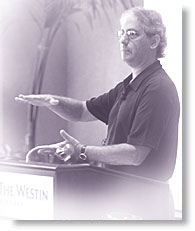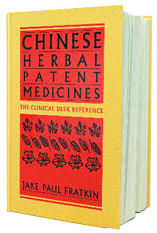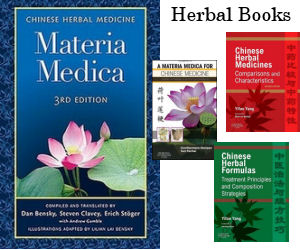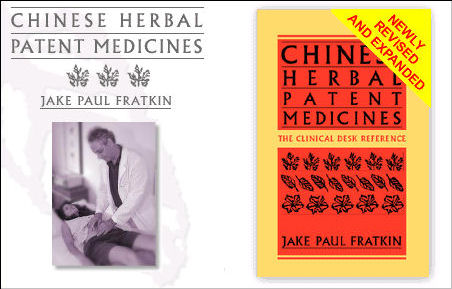Acupuncture & TCM Articles

Articles by Jake Paul Fratkin, OMD, LAc
Jake Fratkin, OMD, LAc, has been in the practice of Oriental medicine since 1978. Following undergraduate and graduate training at the University of Wisconsin in Chinese language and philosophy and pre-medicine, he pursued a seven-year apprenticeship in Japanese and Korean style acupuncture with Dr. Ineon Moon and a two-year apprenticeship in Chinese herbal medicine with Drs. Zhengan Guo and Pak-Leung Lau in Chicago. He also spent a year in Beijing hospitals interning in advanced herbal medicine, specializing in gastrointestinal and respiratory disorders, and pediatrics.  Dr. Fratkin is the author of several books, including Chinese Herbal Patent Medicines: The Clinical Desk Reference, and is the editor-organizer of Wu and Fischer's Practical Therapeutics of Traditional Chinese Medicine. In 1999, he was named the "Acupuncturist of the Year" by the American Association of Oriental Medicine.
Dr. Fratkin is the author of several books, including Chinese Herbal Patent Medicines: The Clinical Desk Reference, and is the editor-organizer of Wu and Fischer's Practical Therapeutics of Traditional Chinese Medicine. In 1999, he was named the "Acupuncturist of the Year" by the American Association of Oriental Medicine.
Chinese Herbal Patent Medicines: The Clinical Desk Reference
Hardback book, 1198 pages. This volume covers 1360 products, including 550 GMP level products and all of California FDB analysis on 505 products. Includes information on endagered animals, heavy metals, and pharmaceuticals. The text is organized into 12 groups, with a total of 109 chapters and includes material by Andrew Ellis, Subhuti Dharmananda, and Richard Ko. Over 80 pages of full-color photos (with English and Chinese cross-reference). Fully indexed.
Modern Applications for Antiviral Therapy
With the emergence of a SARS (sudden acute respiratory syndrome) epidemic several years ago in southern China and Hong Kong, Chinese herbal medicine obtained some degree of international notice.
Traditional Chinese hospitals reported a much smaller incidence of staff health workers coming down with the SARS flu. This was due to health workers taking herbal formulas to boost their immune system and combat the virus. Equally, patients treated with Chinese herbal formulas were achieving a much higher success rate compared to the Western medical approach of using the antiviral ribavirin combined with steroids.1 In treating the sick, the Chinese approach followed principles of disease differentiation for each patient, rather than concocting standard herbal treatments, in each case addressing various presentations of lung fire, lung phlegm, yangming fever, etc. What was significant for the treatments of the SARS flu, however, was the inclusion of larger doses of specific herbs having clear antiviral properties, including ban lan gen (radix isatis), ku shen (radix sophora flavescens), guan zhong (rhizome dryopteris), ban zhi lian (herba scutellaria barbata), she gan (rhizoma belamcanda) and others.

In China, for common viral infections outside the SARS issue, we are seeing more emphasis on the inclusion of herbs with strong antiviral properties. The classical approach, even including the Wen Bing (Warm Disease) theory of the early 18th century, paid strict attention to disease mechanisms and differentiation of patterns, and used in smaller quantities traditional herbs to "clear heat and resolve toxin." Now, we are seeing formulas emerge with a stronger emphasis on larger proportions of antiviral herbs. An obvious way to illustrate this is by comparing the traditional formula yin qiao san with the modern patent medicine gan mao ling.
Many American practitioners with more than 15 years experience relied on yin chiao pills (yin qiao jie du pian) for the first signs of cold, and many still use it as their first line of defense. The original formula was formulated in 1798 by Wu Tang (Wu Jutong, 1758-1836), and published in Systematic Differentiation of Warm Pathogen Diseases (Wen Bing Tiao Bian). This was a pivotal volume for the emerging Wen Bing school.
Yin qiao san addresses heat toxins directly with the herbs jin yin hua (flos lonicera) and lian qiao (fructus forsythia), hence the name yin qiao. These two herbs make up 36 percent of the formula. Until modern times, the combination of jin yin hua and lian qiao offered the main approach to treating viruses causing upper respiratory infections. Other herbs in the formula reinforced the therapeutic effects: niu bang zi (arctium lappa) to address sore throat, dan zhu ye (folium lophatherum) to reduce fever and internal heat, and three herbs to dispel wind: bo he (herba mentha), dan dou chi (semen glycine sojae praeparatum), and jing jie (herba et flos schizonepeta).
Yin qiao san is effective for early stage colds, and because of its ability to push heat toxins out to the surface, it is the preferred foundation formula for treating pediatric measles and chicken pox.2
However, a modern patent medicine has been available for the last 25 years that outshines the ability of yin qiao san in speed and effectiveness for treating common cold. I am referring to gan mao ling. Originally available from United Pharmaceutical Manufactory in Guangzhou, the formula proved so effective that the identical prescription is also offered by several companies, including Plum Flower, Golden Flower and Kan Herbals. (A combination of gan mao ling and yin qiao is available from Health Concerns. Herbal Times, from NuHerbs, offers a gan mao ling with a different formula.)
Why is gan mao ling more effective? In my view, it is because of four herbs that are specifically antiviral in effect and that comprise 74 percent of the formula. Supportive herbs are reduced to a secondary function. The strong antiviral herbs are gang mei gen (radix ilex), san cha ku (radix evodia), ban lan gen (radix isatis), and jin yin hua (flos lonicera). Instead of the 36 percent antiviral herbs of yin qiao, the 74 percent significantly increases its effectiveness in combating viral cold.
Of these four antiviral herbs, lonicera (jin yin hua) is well known for respiratory infections, and is the main ingredient in yin qiao san. Its medicinal effects have been known since the 7th century.3 Isatis (ban lan gen) has often been considered China's preeminent antiviral herb, and its use can be dated back to Li Shi-Zhen's Grand Material Medica (Ben Cao Gang Mu), from 1590. What is unique to this formula is the inclusion of ilex (gang mei gen) and evodia (san cha ku). These two herbs cannot be found in either of the two new authoritative English language textbooks, the revised Chinese Herbal Medicine Materia Medica by Bensky, Clavey and Stöger, or John and Tina Chen's Chinese Medical Herbology and Pharmacology. Yet their prominence in this formula indicates the willingness of Chinese herbal manufacturers to utilize recently discovered herbs with strong antiviral effects.
Similarly, we have seen other products adapt herbs that either are not contained in the common materia medica, or have not been used in traditional formulas. Zhong gan ling, another modern formula for flu and cold, uses mao dong qing (radix ilicis pubescentis) for 27 percent of the formula and ma bian cao (herba verbenae) for another 18 percent. Ilex (mao dong qing) does not appear in the classical literature at all, but has generated significant clinical research for its ability to clear heat and resolve toxins.4 Verbena (ma bian cao) was mentioned in early herbal texts,5 but one is hard-pressed to find it used in any classical prescription.
Inclusion of other little known but powerful antimicrobial herbs can be found in numerous patent medicines from China available in Chinatown herb stores, and are also found in certain products by American companies such as Seven Forests, Health Concerns, Herbal Times, Bio Essence and Evergreen. Some of these herbs have been described in the classical literature, but do not seem to survive in any classical formulas.6 These powerful herbs include she gan (rhizaoma belamcanda), bai jiang cao (herba patrinia), zi hua di ding (herba viola), bai hua she she cao (herba oldenlandia), chuan xin lian (herba andrographis), shan zhi ma (radix helicteres), hu zhang (radix polygonum cuspidatum), shan dou gen (radix sophora subprostrata), yu xing cao (Herba Houttuynia) and qi ye yi zhi hua (radix paris).
It is unfortunate that the general public in the United States, following the example of the conventional medical establishment, is unaware of the extraordinary treasure house of Chinese herbs and herbal products that effectively address common viruses. Products exist for the treatment of cold, influenza, measles, chicken pox, herpes simplex, herpes zoster (shingles), and the viruses that are responsible for most ear infections, sore throats and coughs. Western medicine continues to rely on antibiotics, even though these medicines do not treat viruses and can significantly weaken the immune system.7 Bensky, Clavey and Stöger's revised Materia Medica lists 48 herbs in their category of “Clear Heat and Resolve Toxicity.’8 In John and Tina Chen's book, an extraordinary 55 herbs are discussed in detail for this same category.9 These herbs aggressively, quickly and effectively destroy viruses. Practitioners using these herbs know of their remarkable effectiveness. It's time for Americans to discover and demand these affordable herbal products, not just for common cold, flu and viruses that affect so many people, but also for the possibility of a SARS epidemic hitting our shores. That virus is spread by migrating geese, and no one is protected should a mutant virus plague us, as it did in the great influenza epidemic of 1918. Western medicine, as demonstrated in the SARS epidemic of 2003 in Hong Kong and China, proved to be remarkably ineffective. The Chinese herbal approach, on the other hand, offered real hope and success for the millions of Chinese people who used them.
References
1 Reuters, April 21, 2003.
2 See Treatment of Paediatric Diseases in Traditional Chinese Medicine.
3 Jin yin hua (flos lonicera) was first recorded in the Tang Materia Medica (Tang Ben Cao) authored by Su Jing in 659 CE. Source is Bensky, et al.
4 Bensky, et al., p. 664.
5 Miscellaneous Records of Famous Physicians (Ming Yi Bie Lu), authored by Tao Hong-Jing, 500 CE. Source is Bensky, et al., p. 666.
6 With the exception of the formula wu wei xiao du yin (Wu Qian, 1742) which contains viola (zi hua di ding).
7 For more on the consequences of antibiotics, see my article on pediatric ear infection at www.gfcherbs.com/Pediatricear.asp?page=5.
8 Bensky, et al., pp. 148-219.
9 Chen, pp. 171-253.
Bibliography and Recommended Reading
Chinese Herbal Medicine Materia Medica , 3rd edition. Dan Bensky, Steven Clavey and Erich Stöger, Eastland Press, Seattle, 2004. , 3rd edition. Dan Bensky, Steven Clavey and Erich Stöger, Eastland Press, Seattle, 2004.
Chinese Medical Herbology and Pharmacology . John K. Chen and Tina T. Chen, Art of Medicine Press, City of Industry, CA, 2003. . John K. Chen and Tina T. Chen, Art of Medicine Press, City of Industry, CA, 2003.
Notes from South Mountain. Andrew Ellis, The Moon Publishing, Berkeley, 2003.
Treatment of Paediatric Diseases in Traditional Chinese Medicine . Hou Jinglun, ed. Academy Press, Beijing, 1995. . Hou Jinglun, ed. Academy Press, Beijing, 1995.
Warm Diseases, A Clinical Guide . Guohui Liu, Eastland Press, Seattle, 2001. . Guohui Liu, Eastland Press, Seattle, 2001.
 
|
